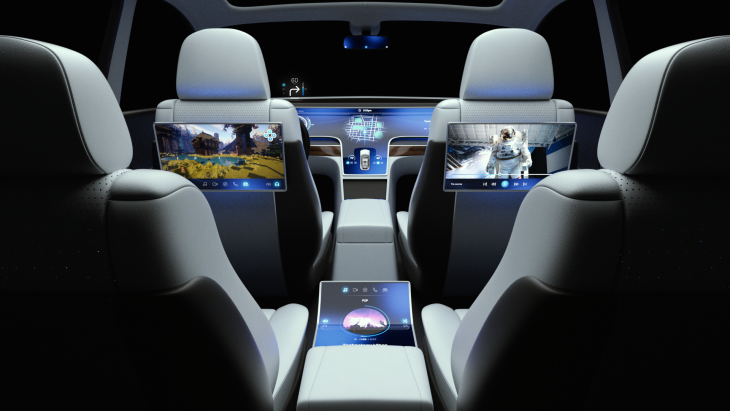
By John Bugailiskis
LAS VEGAS – The metaverse (the connection of physical and digital spaces) is already becoming a buzzword a CES 2022 and Qualcomm president and CEO Cristiano Amon claims the company’s processor chips and strategy make it “the ticket to the metaverse.”
The definition of the metaverse continues to evolve with technologies like 5G that will power it. Metaverse currently refers to utilizing augmented reality, virtual reality, 3D holographic avatars, video and other means of communication to create a highly immersive virtual world that is parallel to the physical world where you can interact with others. The metaverse will be accessible through phones, computers, wearable tech, and headsets and will allow you to work, shop, exercise, play, socialize, watch movies, and much more.
A digital twin is a representation of the physical world or process that is synchronized with the real world and is one of the fundamental building blocks of the metaverse.
“The easiest way to describe the metaverse is that there is going to be digital twins of everything,” explained Amon who spoke at Tuesday’s CES media day in Las Vegas. Amon is one of only a few company heads who actually made the trip to CES to present in person.
“So, you can have an digital twin of a car, you can have an digital twin of a substation. As an example, we have engaged with utility companies for 5G industrial IoT. You can have a digital twin of a conference room. You can have a digital twin of your home. You can have a digital twin of your social network,” Amon said.
“The reality is with technologies such as 5G that connects us with the cloud 100% of the time, you can have access to your digital twin, or you can connect the two. That’s the role of Qualcomm in the metaverse and that’s why we’re the ticket to the metaverse. We’re the gateway that connects the physical to the digital world with the devices that we have built that allow you to have a virtual reality augmented experience.”
Amon believes the metaverse will develop in different forms.
“For example, some of the work we’re doing with Microsoft is a very enterprise focused digital twin. But it can range from I am going to do a repair on a car, in an automotive industry. And as you look at somebody’s car, that car, will have a digital twin which you can see with augmented reality glasses. You open the hood as a technician, you are given information. This is a problem, this is a problem, this is not a problem. This is how you fix it.”
As the metaverse continues to connect the physical world with the digital world “incredible use cases” will take shape he added.
“It’s not about one metaverse, it’s going about to be a combination of different applications that you connect digital physical spaces. But I also believe the opportunity for the consumer in the metaverse is also very big. It’s just a natural evolution of how you think about social, which is connecting people and now you can connect people virtually. We got a glimpse of how that actually works when we started to do a lot of collaboration for the past two years to see how that can evolve. So, the opportunity is already significant.
“But we just are at the tip of the iceberg. We haven’t even seen yet augmented reality at scale, which is much bigger than VR. We haven’t seen yet, China, which is coming and I think that’s an incredible opportunity. And the size is going to be material.”
Cashing in on the metaverse is part of Amon’s plan to diversify Qualcomm from a mobile phone chip provider into new markets targeting automobiles, PCs, and the internet of things to boost its current annual market value from $100 billion to around $700 billion in the next decade.
The strategy aligns with automakers’ plans to transform cars into mobile computers that generate new streams of revenue through paid over the air upgrades.
At CES Amon also announced a series of new partnerships to further its “Digital Chassis,” suite of cloud-connected “platforms” which automakers can adopt in full or à la carte. It includes the Snapdragon Ride Platform for advanced driver assistance systems (ADAS) and automated driving, the Auto Connectivity Platform for LTE, 5G connected services, cellular vehicle-to-everything (C-V2X), Wi-Fi, Bluetooth and precise positioning, and the next generation of the Snapdragon Cockpit, a digital cockpit and infotainment system.
Amon announced that Volvo is one of the latest automakers to integrate Qualcomm’s Snapdragon Cockpit Platforms to bolster their infotainment systems in some of its upcoming models. Volvo’s upcoming fully electric SUV and Volvo EV brand Polestar’s Polestar 3 SUV will both feature Qualcomm’s digital cockpit, powered by Google’s Android OS, and a suite of wireless technologies to support Wi-Fi and Bluetooth. The automaker expects to launch vehicles with these features later this year.
“Qualcomm Technologies understands automakers’ needs for uniqueness and differentiation as well as the tremendous opportunity to redefine the automotive and transportation business model. Through the Snapdragon Digital Chassis, we offer an array of open platforms to rapidly enable connected and intelligent experiences with enhanced safety features,” said Nakul Duggal, senior vice-president and GM, automotive, Qualcomm Technologies, Inc. in a press release.
“The Snapdragon Digital Chassis allows platforms to stay continually up-to-date with new capabilities after vehicle purchase, while allowing the automaker to create new features and services for enhanced customer engagement and services-based business models.” (See above for Snapdragon Digital Chassis rendering.)



